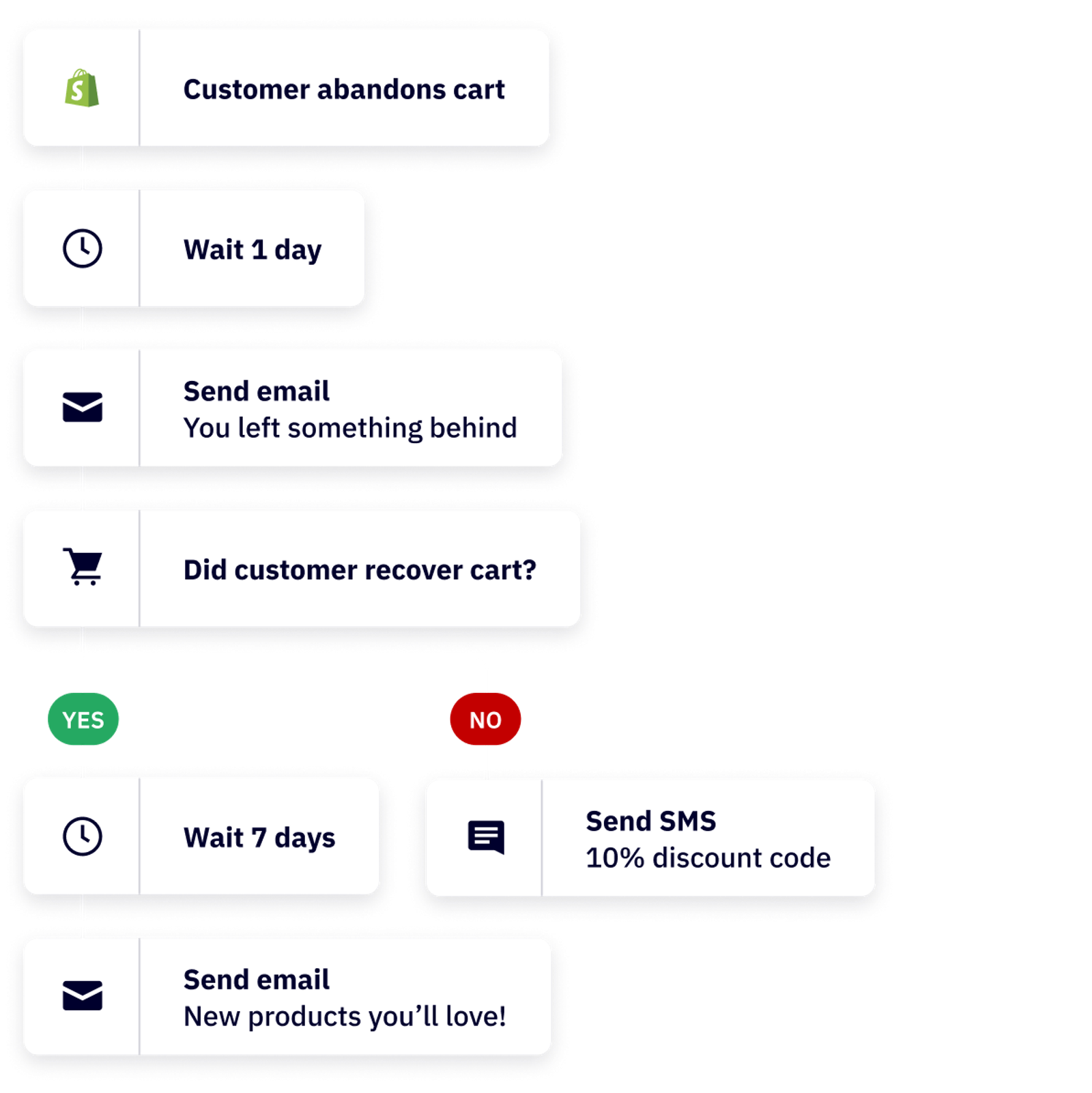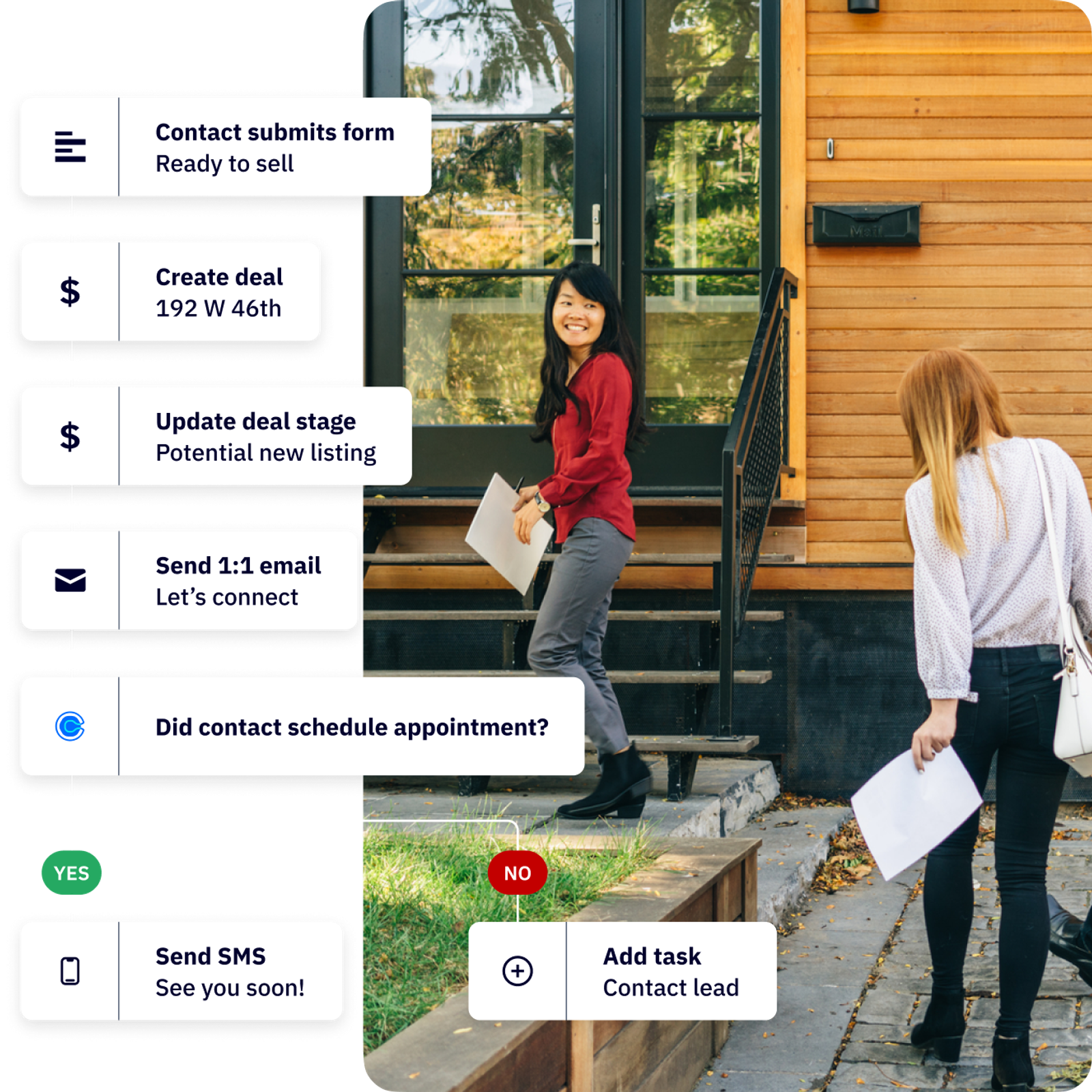Abandoned Cart Reminder
Leverage Shopify insights to send email reminders to customers who leave the checkout without completing a transaction.
Power your store with intelligent marketing automation. Turn shoppers into loyal customers with frictionless, personalized experiences.



Get the tools you need to grow one-time purchasers into brand loyalist through the entire customer journey in a matter of minutes.
Personalize your messages with email automations designed to get you the next sale. Showcase your product catalog, cross-sell relevant products, send abandoned cart reminders, target messages based on product interest, and more.

Write out what you want to achieve in plain text, and our intelligent automation builder will create a draft automation with relevant actions, triggers, and goals.
No matter what you want to do with automation, chances are there’s a pre-built recipe for you. Use them off-the-shelf, or leverage them as a starting point to customize and expand.

When you automate manual tasks behind the scenes, you free up your team’s time to provide a personalized, relationship-building experience.
Adapt, change, and automate your email or marketing campaigns based on customer health, feature adoption, and more.

Analyze cart abandonment for insights into buying process issues—like shipping costs or complex checkout—to enhance the shopping experience.
Test different strategies to find out what works best for recovery emails. Drive more revenue with recommendations tailored to individual customer tastes.

Leverage store and behavior data to show each shopper products that resonate with their unique preferences.
Analyze purchase histories and individual product success to tailor future offerings and communications. Use personalized content and product recommendations endations to boost brand loyalty and long-term customer value.

Provide effortless subscription experiences for your customers. Our recurring payment features boost the lifetime value of your customers, increase average order value, and build brand loyalty.
Automate payment processes to simplify the customer journey and offer subscription options straight from your storefront.

Check out our pre-built automation recipes and start building out effective ecommerce workflows in seconds.
Leverage Shopify insights to send email reminders to customers who leave the checkout without completing a transaction.
Send an automated follow-up email for your customer to review their purchase
Do you want to make loyal customers feel special and celebrated? Add this special day coupon code automation to your…
Send a series of automated emails that promote a specific product or service to your contacts. One email per day, for four days.
Start building best-in-class shopping experiences today with our intelligent, predictive, and effortless features.
With our platform, you have everything you need to sell your products and grow your business.

Run a unified automation strategy for all your stores whether they are online, brick & mortar or both. Keep track of all interactions to trigger automation that deeply personalize the experience of each shopper.
Operate multiple stores selling in different countries leveraging the same automation strategy. Automate assigning deal values, customizing account fields and attaching contracts to each customer record.
Constantly updated product catalogs to reflect the latest pricing and stock changes from your store. Use features like forms, abandoned cart recovery and ad integrations to turn visits into purchases
Create best-in-class, differentiated experiences for both buyers & sellers. With automation, buyers find an assortment of great products and sellers sell fast.

75% of shoppers abandon their online carts. But with intelligent marketing automation, Morrow Audio won back 26% of incomplete sales and $30k in revenue.

Even though I’m the CEO, president, and founder of Morrow Audio, because ActiveCampaign is so easy to use – I enjoy doing it! And the website is a selling machine. All I have to do is get people to show up and they buy.
Try it free for 14 days.